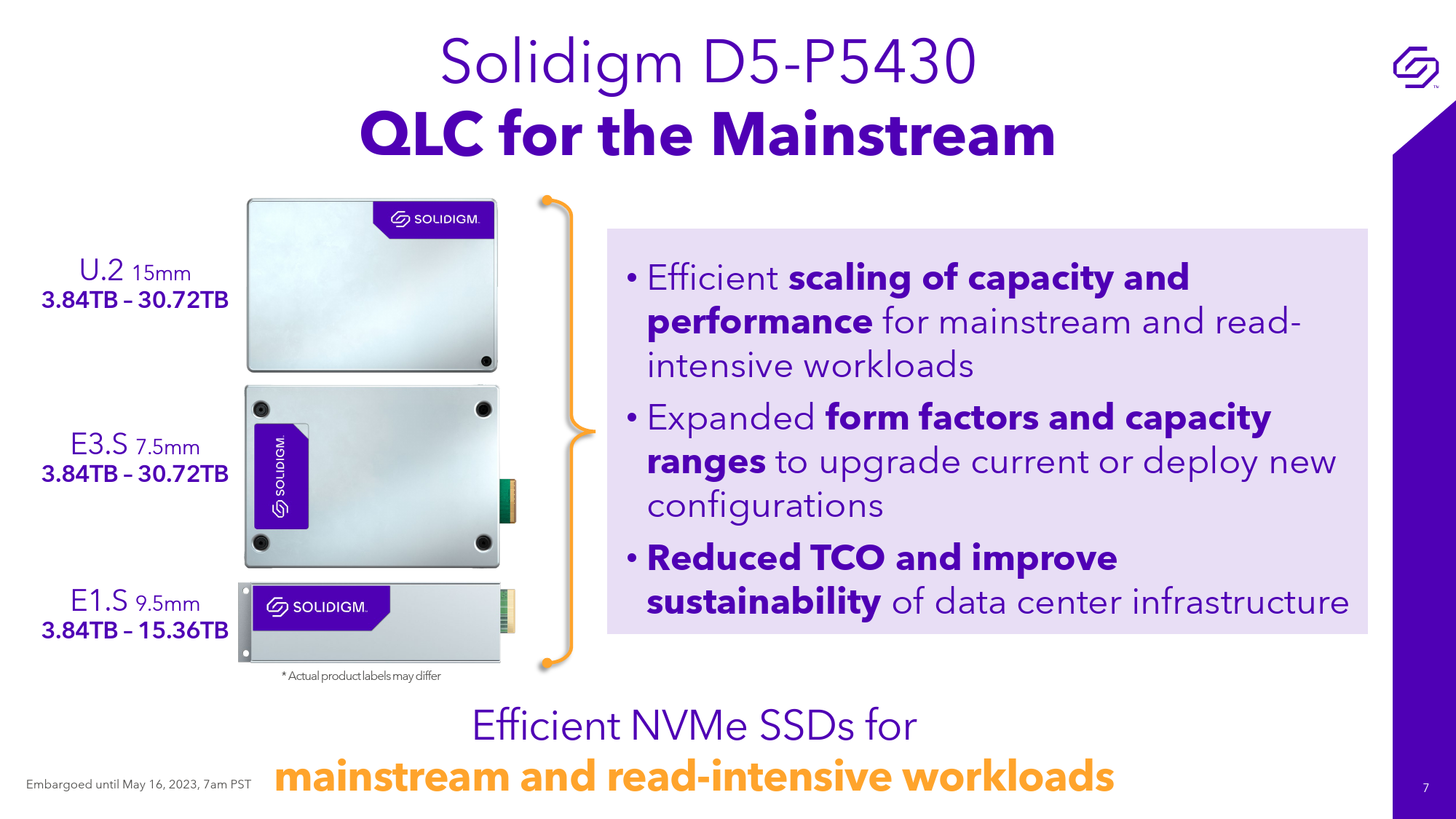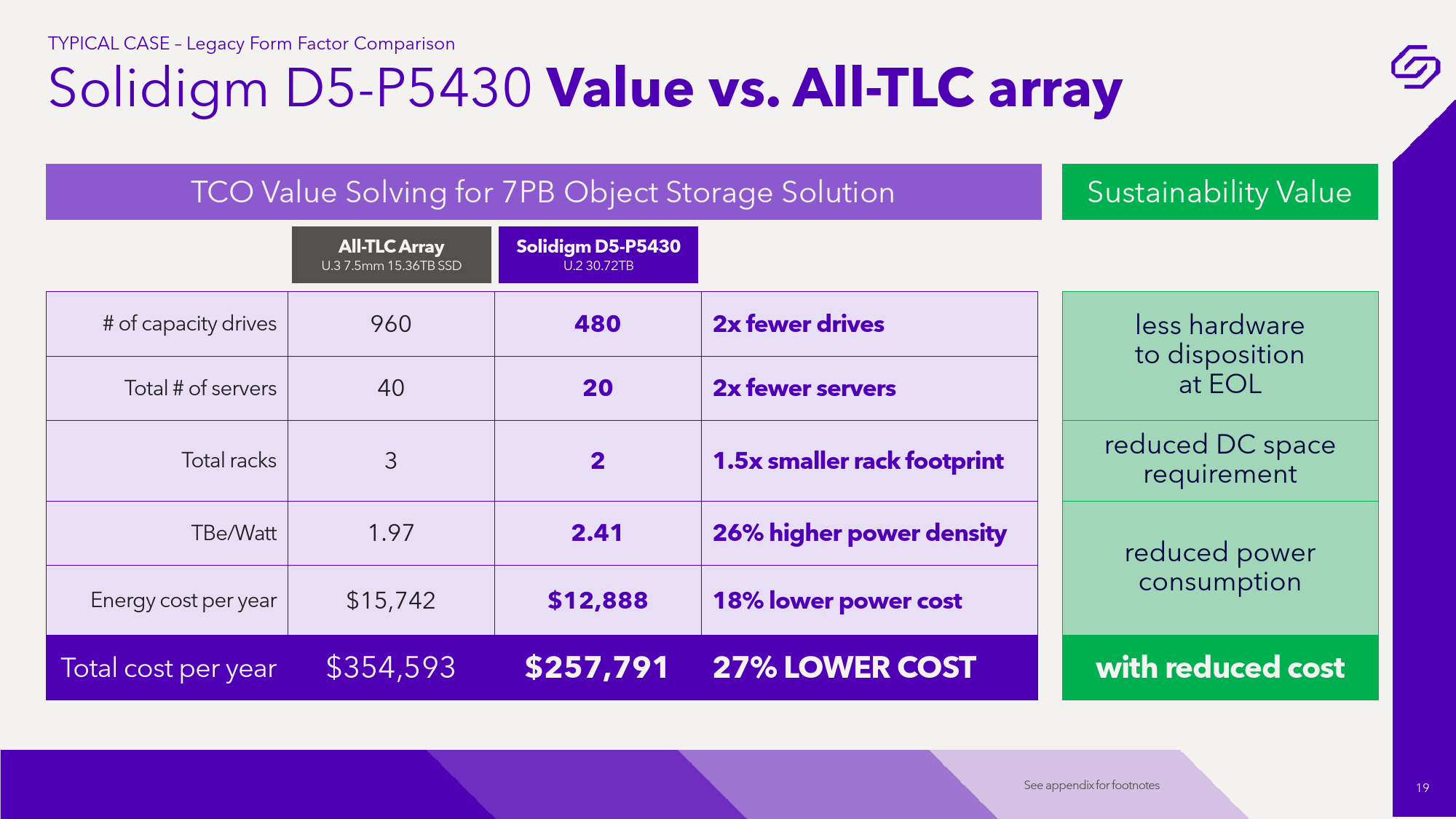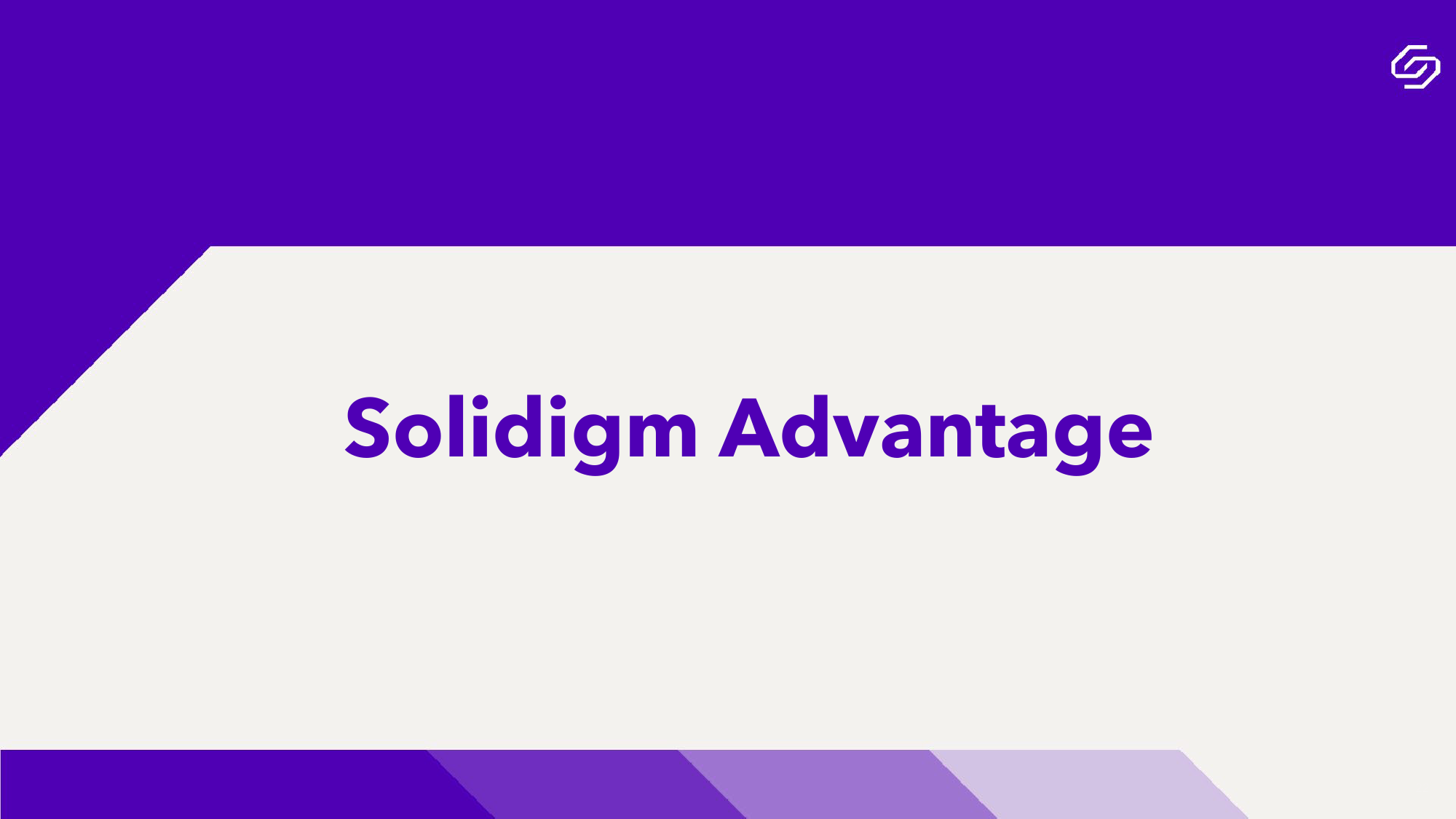Solidigm's 30.72TB SSD Aims For TLC Performance at QLC Price
Solidigm's D5-P5430 3D QLC NAND-based SSD aims mainstream and read intensive applications.

3D QLC NAND memory has apparent storage density and cost-per-GB advantages over 3D TLC NAND, but its performance and endurance were not particularly suitable for all kinds of applications, particularly in the data center space. But Solidigm believes that its controller and firmware innovations will make its QLC-based D5-P5430 SSDs solid contenders for mainstream and read-intensive datacenter applications due to their combination of capacity, performance, power consumption, and TLC-class endurance.
High Capacity, Massive Endurance
Solidigm's D5-P5430 drives rely on the company's NVMe 1.4c-compliant platform with a PCIe 4.0 x4 interface as well as 192-layer 3D QLC NAND memory.
When it comes to performance, Solidigm rates the new drives for up to 7,000/3,000 MB/s of sequential read/write speed as well as up to 971K/120K random read/write 4K IOPS, which is in line or slower than its direct predecessor (Intel's/Solidigm's D5-P5316 introduced in late 2021 that relied on 144-layer 3D QLC NAND), and which is substantially slower when compared to the write performance of 3D TLC NAND-based enterprise SSDs. For example, the new D5-P5430 SSDs feature significantly lower write speeds than Micron's 6500 ION SSDs.
| Row 0 - Cell 0 | Solidigm D5-P5430 | Solidigm D5-P5316 | Samsung PM9A3 | Micron 6500 ION |
| Memory | 192L 3D QLC | 144L 3D QLC | 128L 3D TLC | 232L 3D TLC |
| Max Capacity | 30.72TB | 30.72TB | 7.68TB | 30.72TB |
| Sequential Read | 7000 MB/s | 7000 MB/s | 6900 MB/s | 6800 MB/s |
| Sequential Write | 3000 MB/s | 3600 MB/s | 4100 MB/s | 5000 MB/s |
| Random Read (4K, QD256/QD128) | 971K IOPS | 800K IOPS | 1.1M IOPS | 1M IOPS |
| Random Write (4K, QD256/QD128) | 120K IOPS | ? | 200K IOPS | 200K IOPS |
| 70% Random Read/30% Random Write (4K, QD128) | ? | ? | ? | 400K IOPS |
| DWPD (random workloads) | 0.58 (?KB) | 0.41 (64KB) | 1 | 0.3 (4KB) |
| PBW | 32 PBW | 22.93 PBW | 14 PBW | 16.4 PBW |
Solidigm's D5-P5430 family consists of drives featuring 3.84TB, 7.68TB, 15.36TB, and 30.72TB capacity points that come in a 2.5-inch/15 mm U.2, E3.S 7.5 mm, and E1.S 9.5 mm form factor. Offering drives in different form factors enable Solidigm to address a wide range of applications and customers.
Solidigm positions its D5-P5430 SSDs for both read-intensive and mainstream workloads that consist of 80% reads (according to the company's own analysis), and the key selling point of these drives is that they enable high storage densities at 3D QLC NAND costs while offering read performance and reliability that is on par or higher than that of 3D TLC NAND-based drives. This positioning is slightly different than the 3D QLC-powered D5-P5316, and it is justified as the company has managed to significantly increase the endurance of its new 3D QLC drive.
Solidigm says that its new D5-P5430 SSDs can reduce the total cost of ownership by as much as 27% for a standard object storage system due to a 50% boost in storage density and an energy cost reduction of 18%. Moreover, compared to 'top-tier TLC SSDs,' Solidigm's latest drive promises to provide up to 14% more writes over its lifespan.
Based on the numbers published by Solidigm, the top-of-the-range D5-P5430 30.72TB can endure up to 32 PBW (petabytes written) over its lifespan, which is higher than its predecessor and even higher than Micron's 6500 ION 30.72TB drive that uses 3D TLC NAND memory. Solidigm hasn't disclosed how it increased the endurance of its drives, but one of the ways to do so is to increase the over-provisioning and implement innovative algorithms for the controller.

























Availability
Solidigm has already shipped Product Release Qualification (PRQ) parts of its D5-P5430 SSDs in a U.2 form factor with 3.84TB, 7.68TB, and 15.36TB capacities, so its customers can order more parts now. The other D5-P5430 SKUs are set for the second half of the year.
Get Tom's Hardware's best news and in-depth reviews, straight to your inbox.

Anton Shilov is a contributing writer at Tom’s Hardware. Over the past couple of decades, he has covered everything from CPUs and GPUs to supercomputers and from modern process technologies and latest fab tools to high-tech industry trends.
-
jeremyj_83 Drives like this and the competing Micron 6500 ION are going to be used as capacity tiers for hyperconverged storage arrays. Based on VMware vSAN maximum drives per disk group (1 write cache drive and 5 capacity drives), you can get more than 500TB storage per host. In a 4 host cluster (need at least 4 hosts), that puts you at over 1PB redundant storage.Reply -
bit_user Reply
This is datacenter gear. They don't publish prices for it.peachpuff said:Prices not found in article...
I've been in the market for some datacenter SSDs to use at home. A writeup of what I've looked at and opted to buy is here:
https://forums.tomshardware.com/threads/datacenter-ssds-for-home-lab.3807207/
As for this article, I would point out that the Samsung PM9A3 is pretty old, by now. I think the other brands have released a couple new generations since it launched, making it a pretty easy target.
I guess I'm glad to hear the industry has made so much progress on taming QLC that it can now be used in datacenter products, but I'm still not touching it. The way I see it, the more progress they make on QLC should make TLC even better. -
peachpuff Reply
I know but why mention prices in the title at all when they're not published?bit_user said:This is datacenter gear. They don't publish prices for it.
-
jeremyj_83 Reply
You cannot even buy the drive yet so it is hard to get pricing. However, for reference the 15.36TB D5-P5316 goes for $2100 on CDW. Going to the 30TB drive will probably put the price around $3-4k retail. If you are going through a VAR and getting 100 of these drives you are going to pay less than retail.peachpuff said:I know but why mention prices in the title at all when they're not published? -
bit_user Reply
Ah, sorry. I missed that. The article indicates that this was based on abstract claims by Solidigm:peachpuff said:I know but why mention prices in the title at all when they're not published?
"Solidigm says that its new D5-P5430 SSDs can reduce the total cost of ownership by as much as 27% for a standard object storage system due to a 50% boost in storage density and an energy cost reduction of 18%. Moreover, compared to 'top-tier TLC SSDs,' Solidigm's latest drive promises to provide up to 14% more writes over its lifespan."
Although those are testable claims, I don't expect this site to attempt validating them. This article is likely just picking up the announcement off the PR Newswire. -
bit_user Reply
Right now, there's one selling (new) on ebay for $1288! The seller is antonline, which I think is a pretty big seller and just might even be Intel-authorized (meaning you get warranty coverage, if buying from them).jeremyj_83 said:for reference the 15.36TB D5-P5316 goes for $2100 on CDW.
I'm telling you guys: there are good deals to be found on datacenter SSDs, these days!
: )